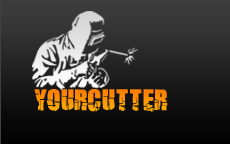 Welding Categories
Welding Categories  Stick Welding
Stick WeldingStick Welding
Shielded Metal Arc Welding (SMAW) is often referred to as stick welding or covered electrode welding process. Stick welding is in the middle of the most widely used welding processes.
The flux covering the electrode melts during the welding process. This forms the slag and gas to shield the arc welding and molten weld pool. The slag must be chipped off the connect bead after welding. The flux is also provides a method of adding deoxidizers,scavengers and alloying elements to the welding metal.
An electric current, in the form of either irregular current or direct current from a welding power supply, it is used to form an electric current arc between the metals and the electrode to be joined. As the weld is laid, the flux coating of the electrode disintegrates, giving off exhaust that serve as a layer of gas and providing a shielding gas, both of which defend the weld area from atmospheric contagion.
The versatility of the process and the simplicity of its welding tools and equipment on operation, shielded metal arc welding is one of the world's most popular welding processes. It dominates other welding processes in the continuation and mend industry, and though flux-cored arc welding is rising in popularity, SMAW continues to be used briefly in the building of steel structures and in industrialized fabrication. The process is used first and foremost to weld iron and steels (including stainless steel) but aluminum, nickel and copper alloys can also be welded with this method.
Operation On Stick Welding:
To hit the electric arc, the electrode is brought into get in touch with the workpiece by a very light touch with the electrode to the bottom metal then is pulled back a little. This initiates the arc welding and thus the melting of the workpiece and the consumable electrode, and causes of effect droplets of the electrode to be approved from the electrode to the weld pool. As the electrode melts, the flux covering disintegrates, giving off shielding gases that defend the weld area from oxygen and other distinctive gases. In addition, the flux provides that the weld molten slag which covers the filler metal as it travels from the electrode to the weld pool. Once part of the welding pool, the slag floats to the welding surface and to stop the weld from contagion as it solidifies. Once hardened, it must be chipped away to make known the finished weld. As welding progresses and the electrode melts, the welder must occasionally end welding to eliminate the left over electrode stub and put in a fresh electrode into the electrode holder. This activity, joint with chipping away the slag, decrease the amount of time that the welder can spend laying the weld, making SMAW one of the smallest amount efficient welding processes. In general, the worker factor, or the percentage of operator's time spent laying weld, is approximately 25%.
The actual welding technique utilized depends on the electrode, the work of art the workpiece, and the position of the joint piece being welded. The welding position and choice of electrode also conclude the welding speed. Flat welds need the smallest amount of operator skill, and can be done with electrodes that melt quickly but solidify slowly. This permits top welding speeds. Sloped, vertical or upside-down welding requires more operator skill, and frequently necessitates the use of an electrode that solidifies fast to stop the molten metal from flowing out of the weld pool. This generally means that the electrode melts less speedily, thus increasing the time required to lay the weld.
Stick Welding Benefits:
- This Welding Equipment used is simple, reasonably priced, and portable
- Electrode provides and regulates its own flux
- lesser sensitivity to wind speed and drafts than gas shielded welding processes
- All position capability
Common Stick Welding Concerns:
In this Chapter: We are going to discuss about the common stick welding concerns. we can help you optimize your welding process variables. Estimate your current welding parameters and welding techniques. We help you remove common welding problems and discontinuities such as those listed below:
Welding Discontinuities
- Undercut
- Incomplete fusion
- Porosity
- Slag Inclusions
- Cracks
Stick Welding Problems
- Arc Blow
- Arc Stability
- Excessive spatter
- Incorrect weld profile
- Rough surface
- Porosity
